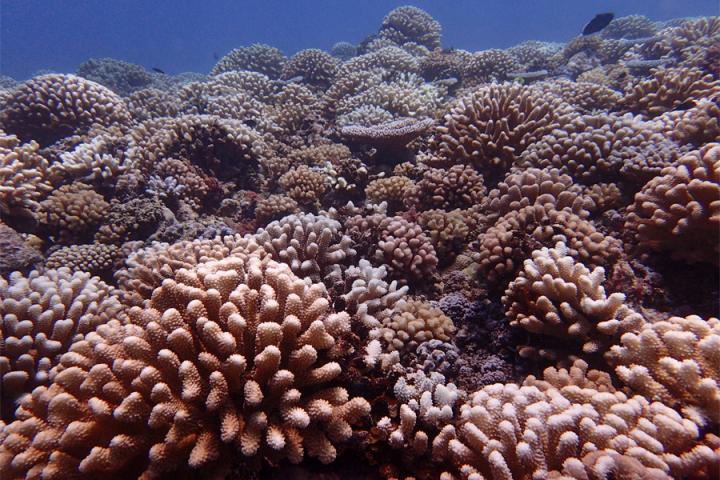
Credit: FSU Coastal and Marine Laboratory/Scott Burgess
Certain brightly colored coral species dotting the seafloor may appear indistinguishable to many divers and snorkelers, but Florida State University researchers have found that these genetically diverse marine invertebrates vary in their response to ocean warming, a finding that has implications for the long-term health of coral reefs.
The researchers used molecular genetics to differentiate among corals that look nearly identical and to understand which species best coped with thermal stress. Their research was published in the journal Ecology.
“Being able to recognize the differences among these coral species that cannot be identified in the field — which are known as ‘cryptic species’ — will help us understand new ways for how coral reefs maintain resilience in the face of disturbance,” said Associate Professor of Biological Science Scott Burgess, the paper’s lead author.
The researchers were studying the coral ecosystem at the island of Moorea in French Polynesia when a coral bleaching event struck in 2019.
Corals get their color from algae that live in their tissues and with which they have a symbiotic relationship. But when corals are stressed — by high water temperature, for example — algae leave the coral, which turns white, hence the term “bleaching.” Bleached corals are not dead, but they are more vulnerable and more likely to die.
Most of the coral at Moorea belong to the genus Pocillopora. During the event, the researchers saw that about 72 percent of the coral colonies from this genus bleached, and up to 42 percent died afterward.
At first, it seemed that the largest colonies were more likely to bleach, but when the scientists examined tissue samples from the coral, they found that colonies belonging to a certain genetic lineage, not coral size, was most important in determining the fate of the corals.
“Because Pocillopora species look so similar, they cannot be reliably identified in the field, which, in the past, has forced researchers to study them as a single group,” said Erika Johnston, a postdoctoral researcher in the Department of Biological Science and a co-author of the paper. “Molecular genetics allows us to reconstruct their evolutionary ancestry and are an essential step to species identification in this case.”
About 86 percent of the Pocillopora corals that died belonged to a group that shares a set of DNA variations, which is known as a haplotype and reflects their common evolutionary ancestry.
“The good news is that not all of the corals died from bleaching, and many species survived,” Burgess said. “The bad news is that the species that died is, as far as we are aware at the moment, endemic to that specific region. So on the one hand, we’re worried about losing an endemic species, but on the other hand, our results show how co-occurring cryptic species can contribute to coral resilience.”
It’s an ecological analogy to having a diverse financial portfolio, where a variety of investments decreases the likelihood of a complete loss.
“Having multiple species that perform a similar function for the reef ecosystem but differ in how they respond to disturbances should increase the chance that Pocillopora corals continue to perform their role in the system, even though the exact species may be shuffled around,” Burgess said.
Maintaining healthy ecological portfolios may be a better management option than attempting to restore a specific species.
“If we maintain the right type of diversity, nature in a way can pick the winners and losers,” Burgess said. “However, the worry for us scientists is that unless the leaders of governments and corporations take action to reduce CO2 emissions, ecological portfolios that can maintain coral reef resilience will be increasingly eroded under current and ongoing climate change. This is concerning because coral reef ecosystems provide economic, health, cultural and ecological goods and services that humans rely on.”
Future research will look into the composition of the algae that live inside the coral, the depth distributions of each cryptic coral species and the evolutionary relationships among the cryptic species.
###
Researchers from the Hong Kong University of Science and Technology, the Scripps Institution of Oceanography and California State University, Northridge contributed to this study.
This work was conducted as part of a National Science Foundation grant awarded to Burgess.
Media Contact
Bill Wellock
[email protected]
Original Source
https:/
Related Journal Article
http://dx.




